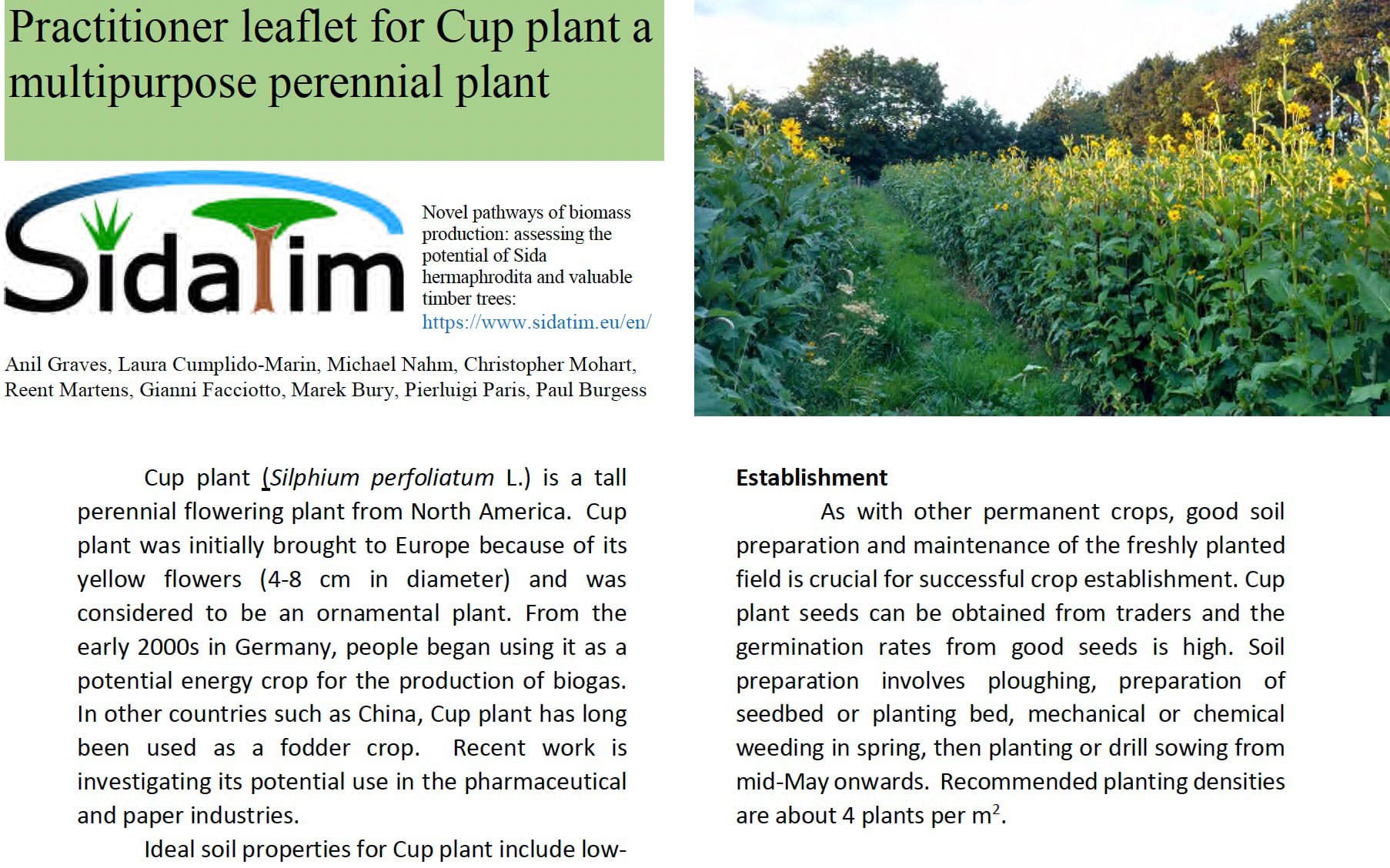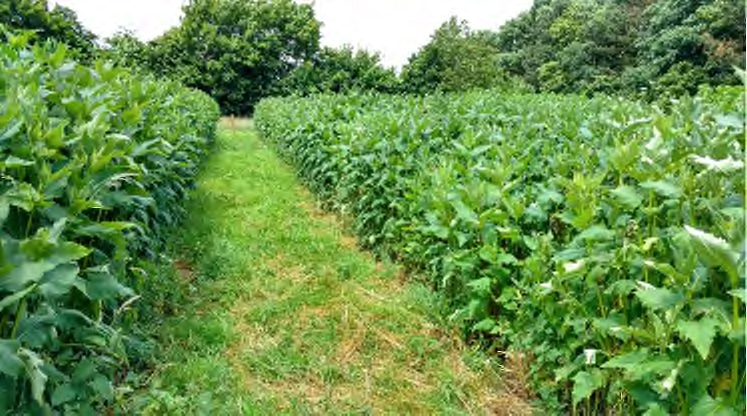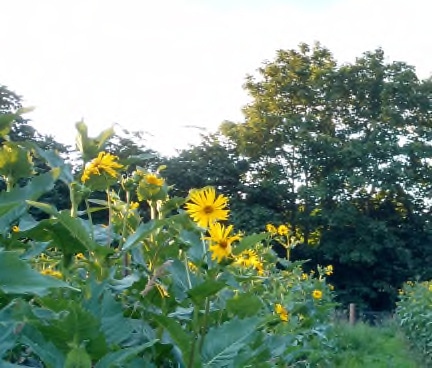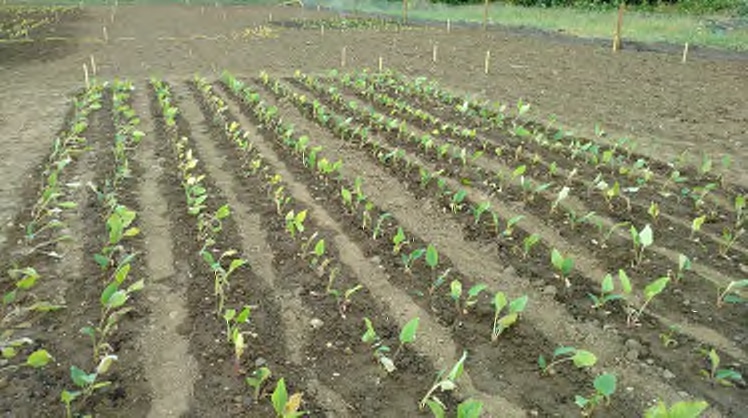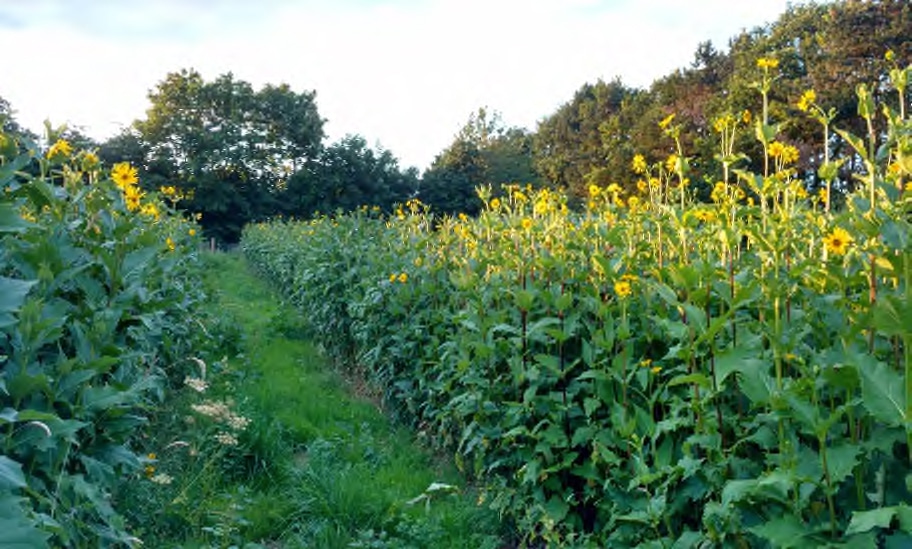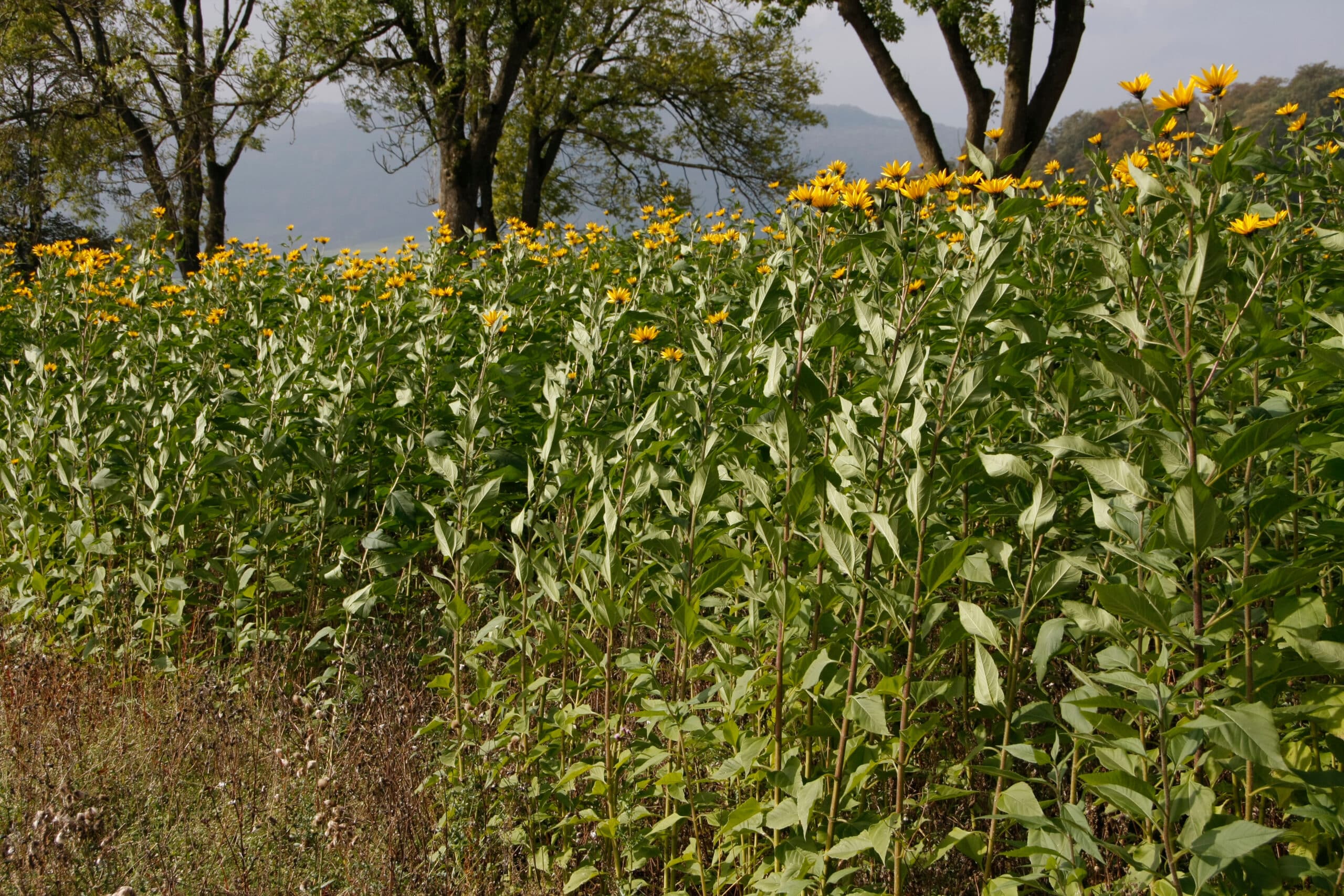Cup Plant
Silphium perfoliatum
General info
Native to the North American prairies (Centre and East of USA and Canada), S. perfoliatum has spread all around the world, being extensively grown for forage in China (Zhang et al., 2010). Of a lush foliage and yellow flowers, it is an attractive decorative plant, reason it was brought to Europe in the 18th century (Kowalski and Kȩdzia, 2007). This species is known for its fast development, production of high annual yields, great tolerance to adverse situations, copious seeding, and straightforward cultivation in general (Zhang et al., 2010).
Part of the daisies family (Compositae/Asteraceae), S. perfoliatum can reach heights of up to 4m tall. On the base, leaves have a chordate to triangular shape, growing alternate. On the stem, coarsely toothed leaves grow opposite, are connate-perfoliate, and have a triangular to ovate shape. Yellow flowers bloom from July to September (Gansberger, et al., 2015).
Cultivation and agronomy
It prospers in riparian woods and edges, as well as abandoned farmland. S. perfoliatum can be established both from seeds (2.0-2.5 kg/ha) and seedlings (40,000 seedlings per ha), it prefers partially sunny to sunny locations, receiving a minimum 400-500mm of precipitation per season. Optimum fertilisation has been estimated to 120-90-90 NPK but it can also be grown without the application of any fertiliser, producing lower yields. Mechanical weeding during the first two years of growth is essential and afterwards advised. During the first year of growth, S. perfoliatum only develops a rosette of leaves on the ground. Harvest can begin on the second year of cultivation and should be done in summer when DM yields are about 30%, often using a maize harvester. Single and double harvests are possible, potentially increasing yields with the latter. Average mature dry matter yields are in the range of 16 t DM ha-1, remaining in full production for 15 years.
Uses
Currently, S. perfoliatum is mainly used as feedstock in anaerobic digestion systems and as forage for cattle. Green biomass is often ensiled to maximise biogas production. Methane yields vary between 227-315 dm3 kg oDM (Haag et al., 2015; Schittenhelm et al., 2016). Alternative uses of S. perfoliatum include forage and fibre, bioremediation, production of an array of essential ingredients for the chemical, pharmaceutical, agrochemical, and food industries. S. perfoliatum promotes a rich-in-biodiversity habitat both above and below ground, supports pollinators with pollen and nectar during a long blossoming season, can contribute to soil health regulation, and carbon sequestration.
Additional Resources
Read the ‘practioner leaflet‘ on Cup Plant kindly shared with us by author Laura Cumplido-Marin of Cranfield University.
Return to crops overview
Author
Laura Cumplido-Marin BSc MSc MEng PhD IAgrE
Research Fellow in Digital Agriculture
School of Water, Energy and Environment, Cranfield University
Relevant research
Laura Cumplido-Marin et al (2020) Two Novel Energy Crops: Sida hermaphrodita (L.) Rusby and Silphium perfoliatum L.—State of Knowledge. Agronomy, 10(7), 928;
Laura Cumplido-Marin, Paul J. Burgess, Gianni Facciotto Domenico Coaloa, Christopher Morhart, Marek Bury, Pierluigi Paris, Michael Nahm, Anil R. Graves (2022) Comparative economics of Sida hermaphrodita (L.) Rusby and Silphium perfoliatum L. as bioenergy crops in Europe. Energy Nexus Volume 6, 16
Laura Cumplido-Marin, Anil R. Graves, Paul J. Burgess, Adrian Williams (2022) On-farm greenhouse gas emissions associated with the cultivation of two new bioenergy crops in the UK. Energy Nexus Volume 8
Biomass Connect Trials
Cup Plant currently being grown as part of the Biomass Connect trials at the following hub sites:
